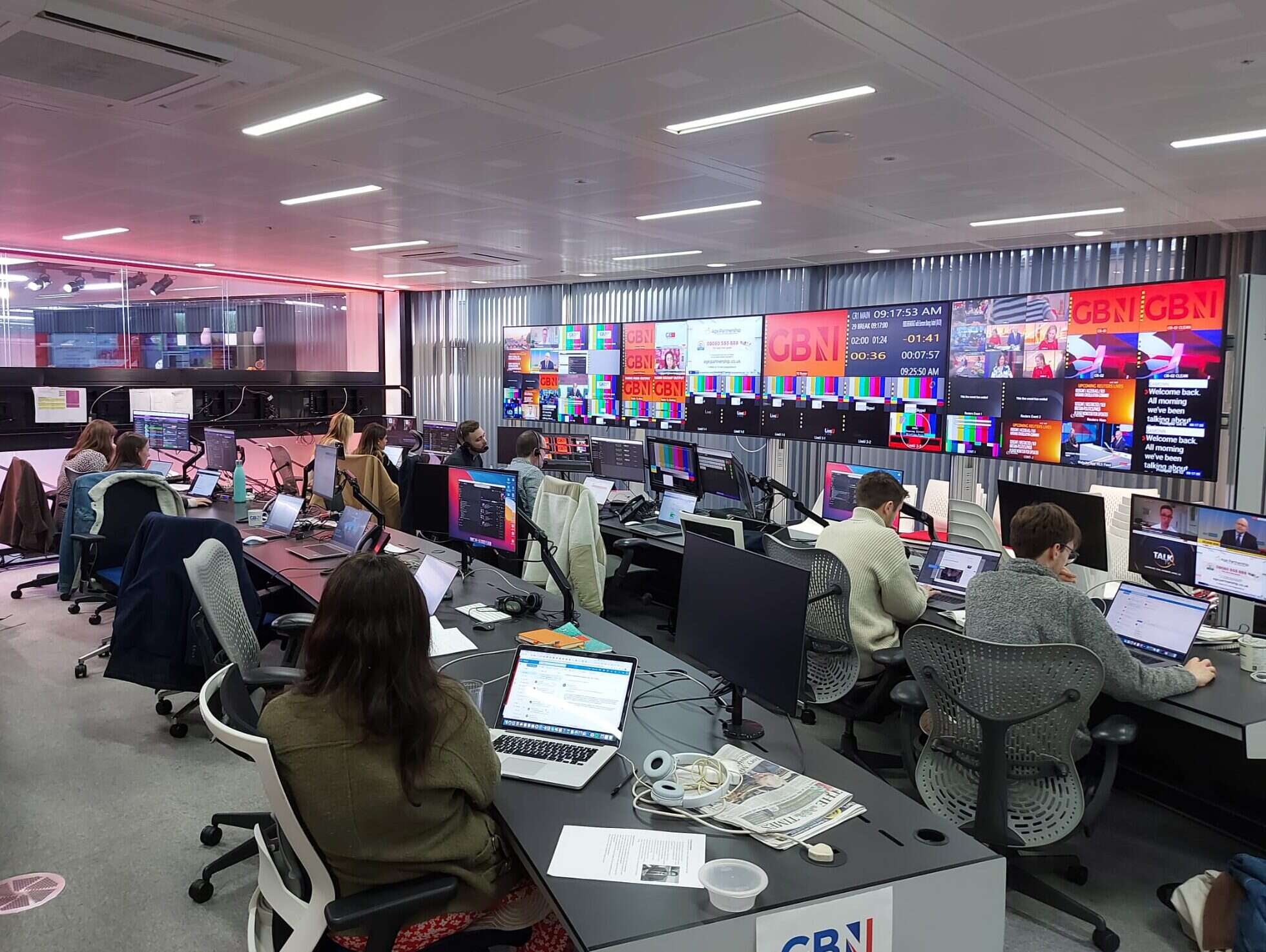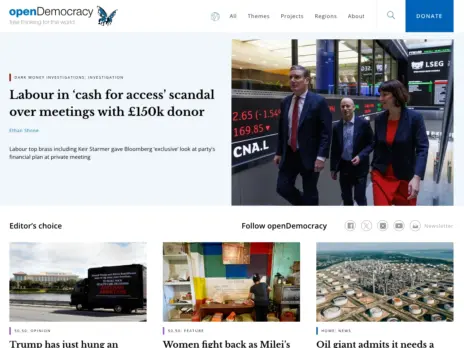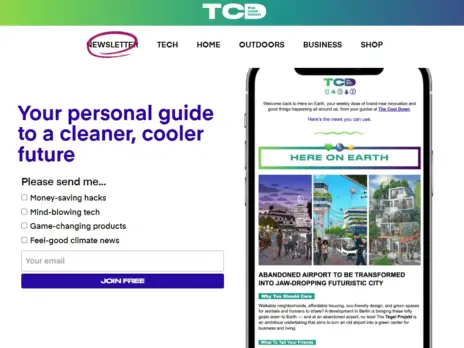
Women of colour are “almost completely locked out” of the UK news industry making them “effectively invisible”, a new report has found.
They also face “extraordinary exclusion” across all elements of the news landscape in the US, according to the “From Outrage to Opportunity: How to Include the Missing Perspectives of Women of All Colors in News Leadership and Coverage” report commissioned by the Bill & Melinda Gates Foundation and produced by audience strategy consultancy AKAS.
But the disparity could prove a major opportunity for the global news industry as, if the imbalance is corrected in representation within both news coverage and newsrooms themselves, “greater engagement by women could revitalise the news industry and generate billions of dollars of additional revenue”.
The report’s author Luba Kassova, co-founder of AKAS, said its findings were a reason for both “outrage and hope”.
“Outrage because women are still severely sidelined as top editors and news protagonists, while women in multi-racial societies are suffering unfathomable exclusion in leadership and their stories are routinely missed.
“Hope because, if brought in from the sidelines, women can be a lifeline for the news industry.”
The report raised concerns around women of colour in particular being “marginalised” in news leadership. In regard to the UK, it said: “Compared to their proportion in the UK working population and compared to the US and South Africa, women of colour are severely underrepresented or altogether missing from editorial roles in the UK.”
It added: “Moreover, women of colour are experiencing extraordinary levels of exclusion and remain invisible within news organisations and the news industry, both as leaders and as protagonists in news stories.
“Global news coverage of stories focusing on gender issues, including seven fundamental gender gaps, is largely absent.”
Meanwhile in both the UK and US, the discrepancy between women and men being assigned “soft” or “hard” beats has lingered, with more editor-in-chiefs being recruited from the latter category.
The UK did have a “comparatively good performance” in terms of overall women’s representation in top news roles compared to the other countries analysed – the US, India, Kenya, Nigeria and South Africa – in part because of a strong showing at the helm of the major national newspapers.
Female newspaper leaders now include Emma Tucker at The Sunday Times, The Guardian’s Katharine Viner, the Mirror’s Alison Phillips, the FT’s Roula Khalaf and The Sun’s Victoria Newton.
However the analysis found women remain “far off gender parity”, making up around 40% of editors-in-chief, 20% of political editors (lagging behind representation in Parliament), and less than a third of economics editors or foreign affairs editors.
Men were quoted twice as much in news stories as women in analysis of stories between January and May.
US news ‘glass ceiling’
The US did slightly better on several of these metrics, despite women in news leadership hitting a “glass ceiling” of under a third.
Women in the US are underrepresented as editors-in-chief, political editors and foreign affairs editors, making up a third of each, despite nearing parity for ministerial positions in politics.
“News lags behind society in terms of women’s representation in top news leadership and in editorial leadership in the highest-profile beats,” the report said.
Nonetheless the US has achieved a much higher level of women who are economics/business (60%) and health editors (70%) and had a better ratio of women’s voices in news coverage (1.7 men’s voices to every woman’s).
The picture is bleaker for women of colour, however, who make up 21% of the working population in the US but just 3% of editors in politics, 4% in foreign affairs, 6% in health and 9% in economics/business.
The report described them as “severely underrepresented”, adding: “Women of colour are experiencing extraordinary levels of cultural exclusion and remain invisible within news organisations and the news industry, both as leaders and as news protagonists/contributors in coverage.
“In addition, women of colour are four times less likely to be political editors than men of colour.”
The report authors assessed 214 journalist roles in key editorial beats in the UK and 153 in the US as of June 2022.
Of 25 news editors from all five countries in the survey, more than 80% said they believe newsrooms and news cultures are still dominated by men.
The biggest barriers to women in news leadership were deemed, in order, to include lower representation, persistent gender stereotyping in story assignments, work-life balance, being outside an all-boys club that aids career progression, harassment on the job, and women’s perceived inefficacy at making their own case.
Women of colour additionally have to face “systemic sidelining”.
The report said: “They operate in a triply stressful environment: dealing with a situation that is personally taxing, where they are expected to resolve their own underrepresentation, at the risk of damaging their already slow-progressing careers.”
Solutions
A focus on retention and the use of targets for representation can begin to improve newsroom culture and representation, the report said. They can also deliberately target women audiences.
Newsrooms should also consciously look for stories that would appeal to both men and women, work on their inclusive storytelling and carry out 360 degree editing – the practice of making sure to include perspectives from all around different areas of a story.
The report said: “The truth is: there is no silver bullet. While hiring more women leaders is an imperative starting point, it is simply not enough to resolve the issue. To accelerate change, women’s missing or muted voices must be amplified at each stage of the news value chain: i.e. in news leadership and newsrooms, in newsgathering, in news coverage, and in news consumption.
“Moreover, to improve gender and racial equity in news, organisations should drive change at the individual level, as typically happens now, but also at two other levels: the systemic and organisational.”
Shereen Bhan, managing editor of CNBC-TV18 in India, told an event to mark the report’s launch on Tuesday said that in her country as well as globally there is currently a “herd mentality” around what stories and issues get picked up and discussed in newsrooms. She said there is also a tendency to depict women as “victims or heroes” with nothing in between.
Instead, she said, a large part of media business models would have to become creating “communities around content” with the senior editorial leadership all on board.
“I think it is an existential issue,” Bhan said. “[If] you have a large constituency of your audience feels alienated from the content that you’re producing and decides to switch off or turn off or not buy the newspaper or switch the remote off you have a problem and I think the management as well as the news leadership needs to recognise this is an existential crisis that we are dealing with as well.”
Business opportunity
Despite a global decline in newspaper revenues, lead researcher Richard Addy told the report’s launch event, there was an 11-12% addressable gender consumption gap and by making the necessary changes news organisations globally could earn an additional $11bn over the next five years and $38bn by 2032.

The UK could see additional cumulative revenues of $413m by 2027 if this opportunity is addressed, for example, while the US could benefit to the tune of $2.7bn.
Addy said these figures represented a “conservative scenario of a one percentage point increase each year in engaging women to close the gap”.

Amanda Barrett, vice president of standards and inclusion at the Associated Press, told the launch event on Tuesday she had led the introduction of an “inclusive storytelling” drive at the agency following a “bit of a crisis” in the newsroom triggered by the removal of an activist woman of colour from a photo.
Barrett said: “It led to some soul searching in our newsroom about who gets coverage, who’s considered important and who’s considered valuable in our reports across formats and around the world. And so I really wanted to set the table for our journalists so they can understand different perspectives and that we were actually leaving people out of our coverage, people who deserve coverage, people who need coverage in their communities.”

She said accuracy is important to the AP but that if it is not covering every type of person within a community, its portrayal of the world is not accurate. The idea of inclusive storytelling includes having diverse sources in a story, deliberately looking for different perspectives and the people who are most affected by, for example, political decisions. She also warned against pigeonholing women in certain types of coverage as they are also impacted by taxes and sports, among other things.
Barrett said there was a case for making efforts to diversify newsrooms on an everyday basis because “many journalism organisations are not going to survive and not going to thrive if they don’t reach more women, and more women of colour and diversify their coverage areas”.
She added: “We’re in dire straits as an industry. A lot of journalism organisations are struggling. Some have closed entirely. Newspapers have gone from publishing seven days a week to three days a week, and part of the reason for that is that we have not diversified our audience.
“And so when I went and started trying to create inclusive storytelling, it wasn’t just something for the newsroom, but it’s also for our revenue teams. They need to understand that there is a business reason for diversifying, otherwise we’re not reaching the audiences and in the years to come we’ll have shrinking income from women from people of colour, because they won’t have a relationship with those news outlets that are ignoring them and ignoring their needs.
“So there really is a reason to push forward and make sure that we are including a lot of different people in our coverage so that we can reach them, that we can be of service to them.”
New York Times and Bloomberg case studies
The New York Times and Bloomberg were praised for their work on representation in their newsrooms and coverage.
The NYT said in February 2021 its non-white staff had reported “unsettling and sometimes painful day-to-day workplace experiences” and that it committed to making its workplace environment more inclusive and diverse.
Since then, a NYT spokesperson said, it has made progress by including “voices and inputs from a range of backgrounds and experiences”, enhancing training for new managers, revamping its mentorship scheme, and creating a company-wide framework setting out a shared understanding of what its culture should be.
The spokesperson said: “Increasing the diversity of our newsroom — more people of colour, more women, more people from outside major metropolitan areas, more younger journalists and more non-Americans — is critical.
“We believe a diverse workforce enables us to create the strongest news report and tell the best stories that resonate with a broad audience and more fully reflect the world we serve.”
At Bloomberg, the number of female guests appearing on Bloomberg TV tripled in three years to 30% at the end of 2021 after the launch of its New Voices programme, which includes media training for female experts and a database of their appearances.
Laura Zelenko, a senior executive editor and founder of New Voices, said this had been the “clearest indication of change”. She hopes the figure will reach 33% or higher this year.
She said the monitoring had been necessary because journalists generally felt their representation was better than it was, and that tracking the data can finally encourage them to change their behaviour.
Zelenko added: “When the journalists think they are being forced to check a box, that’s a problem. It was once common for people to suggest that identifying and bringing on more female experts would somehow lower the quality of our coverage; I rarely hear that anymore and it’s easy to point to improved coverage every week.
“But the more people are on board, the more senior managers are repeating the messaging, the more examples you can show of what works, the more successful the initiative becomes.”
She added that getting more representative experts in also helps “recruiting and retention as the next generation asks questions about representation – both in the workforce and in our content”.
Email pged@pressgazette.co.uk to point out mistakes, provide story tips or send in a letter for publication on our "Letters Page" blog






